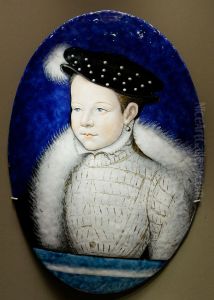Leonard Limousin Paintings
Leonard Limousin, born in 1505 in Limoges, France, was a prominent figure in the development of Limoges painted enamels during the French Renaissance. He is often credited with elevating the status of enamel work to that of fine art during the 16th century. Limousin's work is characterized by its intricate detail, vibrant colors, and the incorporation of Renaissance ideals of beauty and proportion. Limousin's enamels often depicted religious scenes, portraits, and mythological subjects, showcasing his mastery over the medium and his ability to blend traditional French styles with influences from the Italian Renaissance.
Limousin gained recognition and patronage from the French court, most notably serving King Francis I of France, who was a great patron of the arts and played a significant role in introducing the Renaissance to France. Limousin's works for the royal court, including pieces for the Château de Fontainebleau, solidified his reputation as one of the foremost enamel artists of his time. His ability to adapt classical and contemporary themes into his enamels appealed to the tastes of the French nobility, further establishing his prominence in the French art world.
Despite his success, much of Limousin's life remains shrouded in mystery, and it is primarily through his surviving works that we gain insight into his artistic genius. Leonard Limousin passed away in 1577, leaving behind a legacy that would influence the art of enameling for generations. His techniques and artistic vision were passed down through apprentices and family members, ensuring his influence persisted. Today, Limousin's enamels are celebrated for their beauty and craftsmanship and are considered key examples of Renaissance art in France. They can be found in museums around the world, testament to the enduring appeal and significance of his work.



